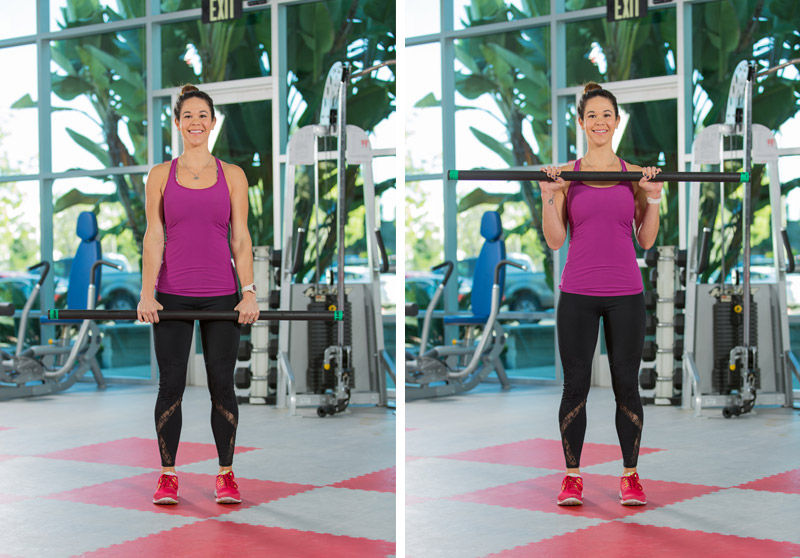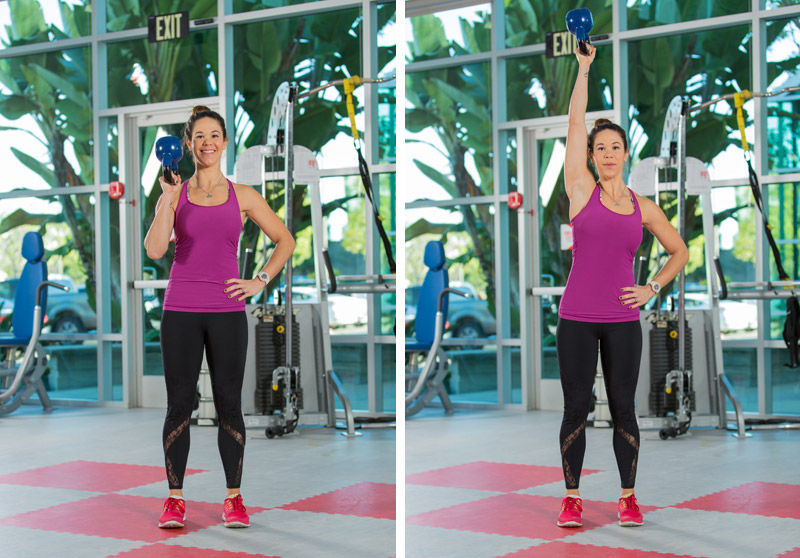Whether a movement involves lifting, carrying, throwing or swinging, the hands are the first point of contact with any object or weight that is held. Unfortunately, grip and forearm strength are frequently omitted from workout programs. For those who lift heavy, the grip is often the first thing to go when failing to complete a lift. Therefore, it is especially important to add one or two specific hand-strengthening exercises to every workout.
The forearm includes two opposing sets of muscles involved with creating a strong grip: (1) the flexors, which close the hand to make a fist; and (2) the extensors along the top of the forearm that are responsible for opening the fist to a flat hand. Exercises that strengthen the forearm flexors will enhance overall grip strength, but it is also important to do exercises that address the action of opening the hand with the extensors. Here are six benefits of training grip strength followed by eight recommended exercises; pick two from the list and add them to your clients’ workouts to help them develop strong hands with a crushing grip.
1. You’ll make a strong first impression.
It’s not necessary to squeeze the heck out of someone’s hand, but a firm grip on a handshake is a sign of confidence that lets the other person know that you are someone who should be taken seriously.
2. Opening jars is easier.
How often have you been at a friend’s house and watched as everyone took a turn to open a stuck jar? Having a strong grip can help ensure that you are always an essential guest to add to any social gathering.
3. A strong grip is essential for many sports.
Don’t just play a sport or pursue a recreational activity to get in shape—get in shape to participate in your favorite activity. The fitter you are the more fun you will have. Many popular recreational sports and activities, including bowling, golf, softball, tennis and, of course, rock climbing, require a strong grip for success.
4. You need a strong grip to be a parent.
From holding a fussy toddler who doesn’t want to leave the park to shaking the hand of your daughter’s teenage suitor, a strong grip goes a long way in letting your kids know who is really in charge.
5. Walking the dog requires a strong grip on the leash.
If you have a larger dog, you know how challenging it can be to hold on to the leash when something grabs its attention. Having a strong grip means that you won’t need to go running after your pet the next time it chases a squirrel.
6. A strong grip boosts your strength for other lifts.
There is a significant neurological connection between grip strength and shoulder strength. The stronger the grip, the more weight can be used for many exercises. It’s common to see people in a gym using wraps or wrist supports when lifting with heavier weights. Don’t fall into this trap. Old-school strength-training enthusiasts (and I’m one of them) typically believe that if you can’t hold it, you shouldn’t try to lift it Wraps can provide a false sense of security. When lifting with barbells, dumbbells, kettlebells, sandbags or medicine balls, simply squeeze the handle, bag or ball as tightly as possible during the exercise to enhance grip strength.
Here are some exercises you can use with your clients to improve grip strength. Some can be performed while seated at a desk, while others require specific equipment from a gym. If you add one or two of these exercises to each of your clients’ workouts, they will develop a strong grip.
Standing Cable Rows with a Towel

Perform a cable row with a towel instead of a handle attachment. Use a small towel and thread it through the carabineer on the machine. Stand with feet planted on the floor and the spine tall. Grip the towel with palms facing up and pull toward the belly button while keeping elbows close to the rib cage.
Reverse Curls

This is one of the most common exercises for forearm and grip strength because it works. Use a straight or an EZ-curl bar with a palms-down grip. Keep your elbows close to the rib cage and lift the weight by pulling up with the top of the hands. For greater intensity, lift the weight for 1 to 2 seconds and lower for 3 to 4 seconds, Complete 10 to 12 reps, rest for 45 to 60 seconds and repeat for two to three sets.
Fingertip Push-ups

When performing push-ups, bridge the hands on the floor so that the finger-tips are the only points of contact. Complete as many push-ups as possible until the hands fatigue, then drop to the knees and keep going to final fatigue. Rest 60 to 90 seconds and repeat two to three times.
Farmer’s Walk with Weight Plates

This exercise is effective for developing core strength when walking and it is a great grip exercise when using weight plates. Grip the edge of a weight plate in a pinch grip (thumb on one side, fingers on the other) and squeeze the weight as hard as possible. Walk approximately 10 meters (30 feet), turn around and walk back to the starting position. Set the weights down, rest for 45 to 60 seconds and repeat for two to three sets.
Bottom-up Kettlebell Shoulder Presses

This exercise is a great way to combine grip and shoulder strength together. Hold a kettlebell by the handle so the bottom is facing up toward the ceiling; use a lighter weight than normal. Squeeze the handle as hard as possible and push the weight up overhead. Perform six to 10 reps, rest for 60 to 90 seconds and complete two to three sets.
Rubber Band Exercise

This exercise can easily be done at a desk during work hours or at home on the couch. Weave a rubber band around the fingers and practice opening and closing the hands. Do as many reps as possible to fatigue, rest 60 seconds and repeat two to three times.
Squeezing a Tennis or Racquetball

Holding on to and squeezing a ball is a good way to develop strength and it may even help reduce stress. Perform as many reps as possible to fatigue (or until you reduce stress levels), rest for 90 seconds and repeat as necessary.




 by
by 






